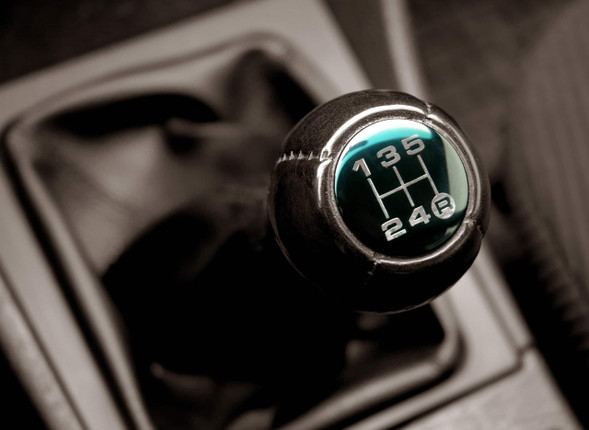The Role of Transmissions in High-Performance Vehicles
In the world of automotive engineering, high-performance vehicles stand out for their exceptional speed, agility, and power. Behind the scenes of these remarkable machines lies a crucial component that plays a significant role in their performance—the transmission. In this blog post, we will explore the role of transmissions in high-performance vehicles, delving into their functions, types, and the impact they have on the overall driving experience. Whether you're a car enthusiast or simply curious about the inner workings of these exceptional vehicles, join us as we uncover the secrets of high-performance transmissions.
I. The Importance of Transmissions in High-Performance Vehicles
Transitions and Fluidity: At the heart of a high-performance vehicle lies the transmission, which serves as the intermediary between the engine and the wheels. It enables the smooth transition of power generated by the engine to the wheels, allowing for efficient acceleration and seamless gear changes. This fluidity in power delivery is essential for achieving optimal performance in high-performance vehicles. The transmission ensures that the engine's power is effectively harnessed and translated into rapid acceleration, enabling the vehicle to unleash its full potential on the road or track.
II. Functions of High-Performance Transmissions
Power Transmission: The primary function of a transmission is to transfer power from the engine to the wheels. In high-performance vehicles, transmissions are designed to handle substantial power output and torque, ensuring that the engine's performance is effectively harnessed for maximum acceleration and speed. By efficiently transmitting power to the wheels, high-performance transmissions allow the vehicle to reach impressive speeds in a shorter span of time.
Gear Ratios: Transmissions in high-performance vehicles are equipped with multiple gear ratios that enable the driver to optimize power delivery based on different driving conditions. The ability to select the appropriate gear allows for maximum performance and efficiency, whether it's for quick acceleration from a standstill or maintaining speed on the highway. High-performance transmissions offer a wide range of gear ratios, ensuring that the engine operates within its optimal power band, providing the necessary torque and horsepower for different driving scenarios.
III. Types of Transmissions in High-Performance Vehicles
Manual Transmissions: Manual transmissions, also known as stick shifts, have long been associated with high-performance vehicles. They offer a direct connection between the driver and the vehicle, allowing for precise control over gear changes. Manual transmissions provide a heightened level of engagement and are often favored by driving enthusiasts for their involvement and the ability to extract the maximum performance from the vehicle. With a manual transmission, the driver has complete control over gear selection, allowing for quick and precise shifts to match the engine's power output.
Automatic Transmissions: Automatic transmissions have become increasingly popular in high-performance vehicles due to advancements in technology. They offer seamless gear changes without the need for manual intervention, making driving more convenient and accessible. Automatic transmissions in high-performance vehicles are often equipped with advanced features such as paddle shifters or sport modes, allowing the driver to have greater control over gear selection and responsiveness. These features provide a balance between convenience and performance, allowing drivers to enjoy the benefits of automatic gear changes while still having the ability to manually shift gears when desired.
IV. Performance Enhancements in High-Performance Transmissions
Dual-Clutch Transmissions (DCT): Dual-clutch transmissions are a technological marvel that combines the best of both manual and automatic transmissions. They utilize two separate clutches, each responsible for engaging a set of gears. This design enables lightning-fast gear changes without interrupting power delivery, resulting in incredibly quick acceleration and smooth shifting. Dual-clutch transmissions have gained popularity in high-performance vehicles for their ability to provide a thrilling driving experience. With their rapid gear changes and precise control, dual-clutch transmissions contribute to the overall performance and responsiveness of the vehicle.
Sequential Transmissions: Sequential transmissions are commonly found in racing and high-performance vehicles, where lightning-fast gear changes are crucial for competitive edge. They offer a sequential gear shift pattern, meaning the driver can only shift gears in a predetermined sequence. Sequential transmissions eliminate the need for a traditional H-pattern shifter, allowing for faster and more precise gear changes. This type of transmission is often found in high-performance sports cars and track-focused vehicles, where quick shifts and minimal time between gears are essential for achieving optimal lap times.
Automated Manual Transmissions: Automated manual transmissions combine the convenience of automatic transmissions with the control and engagement of manual transmissions. They use an automated clutch mechanism to engage and disengage gears, eliminating the need for a traditional clutch pedal. Automated manual transmissions offer the ability to shift gears manually or allow the transmission to shift automatically, providing a balance between performance and convenience. They are often found in high-performance vehicles that prioritize driver engagement while still offering the ease of an automatic transmission for everyday driving.
V. Impact on High-Performance Driving Experience
Acceleration and Speed: Transmissions play a crucial role in achieving impressive acceleration and top speed in high-performance vehicles. The ability to deliver power seamlessly to the wheels through efficient gear ratios and smooth shifts allows the vehicle to reach high speeds quickly and effortlessly. Whether it's launching from a standstill or overtaking on the highway, high-performance transmissions ensure that power is delivered promptly and effectively, enabling the vehicle to achieve breathtaking speeds.
Responsiveness and Control: High-performance transmissions offer improved responsiveness and control, giving drivers the ability to manipulate gear changes to suit their driving style or road conditions. Whether it's downshifting to utilize engine braking or upshifting for maximum speed, a high-performance transmission empowers the driver to have a more engaging and dynamic driving experience. With precise and quick gear changes, high-performance transmissions enhance the vehicle's agility and responsiveness, allowing drivers to navigate corners, bends, and straights with confidence.
Handling and Cornering: The transmission's role extends beyond straight-line acceleration. In high-performance vehicles, transmissions contribute to improved handling and cornering abilities. Some transmissions are equipped with features such as limited-slip differentials or torque vectoring, which distribute power to the wheels more effectively, enhancing stability and traction during aggressive cornering maneuvers. These features work in conjunction with the vehicle's suspension and other components to optimize grip, allowing the driver to push the limits of performance while maintaining control and stability.
VI. Maintenance and Care
Regular Fluid Changes: High-performance transmissions require regular fluid changes to maintain their optimal performance and longevity. The fluid acts as a lubricant and coolant, preventing excessive friction and heat buildup. Consult the vehicle's owner's manual or seek guidance from a professional to determine the recommended fluid change intervals and specifications. Regular fluid changes help ensure smooth operation and minimize the risk of overheating or component wear.
Proper Cooling: High-performance transmissions generate a significant amount of heat, especially during spirited driving or track sessions. It's crucial to ensure that the transmission is adequately cooled to prevent overheating and potential damage. Upgraded cooling systems, such as additional radiators or transmission coolers, can help dissipate heat more efficiently and maintain optimal transmission operating temperatures. Proper cooling measures help prolong the lifespan of the transmission and maintain its performance under demanding conditions.
Professional Tuning: Fine-tuning a high-performance transmission can maximize its capabilities and align it with the vehicle's overall performance characteristics. Professional tuning services can optimize shift points, firmness, and responsiveness, tailoring the transmission's behavior to suit individual preferences and driving requirements. Tuning can improve shift speed, refine gear ratios, and enhance the overall performance of the transmission, resulting in a more exhilarating driving experience.
VII. Frequently Asked Questions (FAQs)
How does a high-performance transmission differ from a regular transmission?
A high-performance transmission is specifically designed to handle higher power outputs and torque levels commonly found in high-performance vehicles. It often incorporates advanced technologies, such as dual-clutch mechanisms or sequential shifting, to provide faster and more precise gear changes. High-performance transmissions also offer a wider range of gear ratios to optimize power delivery in different driving scenarios.
Can I upgrade the transmission in my existing vehicle to a high-performance transmission?
In some cases, it may be possible to upgrade the transmission in an existing vehicle to a high-performance transmission. However, it's essential to consult with automotive experts or specialists who can assess the compatibility and feasibility of such an upgrade. Upgrading the transmission may require modifications to other components, such as the engine or drivetrain, to ensure proper integration and functionality.
Are high-performance transmissions suitable for everyday driving?
High-performance transmissions can be suitable for everyday driving, depending on the specific characteristics and features of the transmission. Some high-performance transmissions offer modes or settings that allow for smoother shifts and more relaxed driving experiences. However, it's important to consider factors such as fuel efficiency, comfort, and ease of use when selecting a high-performance transmission for daily commuting or regular driving.
VIII. Conclusion
In conclusion, the transmission plays a crucial role in the performance and driving experience of high-performance vehicles. Whether it's the seamless power delivery, precise gear changes, or the ability to optimize performance through gear ratios, high-performance transmissions are essential for unlocking the full potential of these remarkable machines. With advancements in technology and engineering, transmissions have evolved to offer a blend of convenience, control, and exhilaration. Whether you're on the racetrack or enjoying a spirited drive on the open road, the transmission is a vital component that allows high-performance vehicles to deliver on their promise of speed, agility, and pure driving pleasure.



